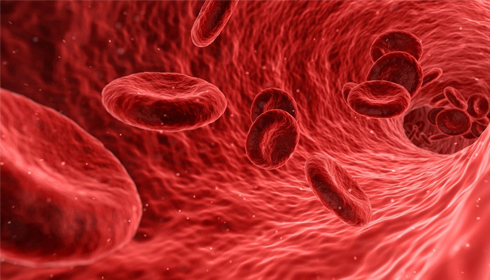
MSU research advances infusion therapy to clean arteries
Researchers at Michigan State University (MSU) have discovered a potential nanotherapy infusion that can lower artery inflammation and assist in eliminating hazardous plaque buildup, which is a primary cause of cardiovascular disease. Published in Nature Communications, the discovery marks a significant advancement towards more efficacious therapies for cardiovascular diseases, which persist as the primary cause of mortality in the United States.
The study focuses on arterial inflammation, which frequently results from plaque formation in the arteries and is a major contributor to heart disease. Plaque buildup can cause heart attacks or strokes, particularly when inflammation makes the plaque prone to rupture. "There are two things that people seem to be afraid of when it comes to plaques," said Bryan Smith, an associate professor at Michigan State University's Department of Biomedical Engineering and the Institute for Quantitative Health Science and Engineering. "Many people don't really understand the difference between them."
Smith described the distinction between two prevalent plaque-related conditions. In one example, a clogged artery (usually 95% to 99% blockage) causes symptoms like chest pain, dizziness, or nausea, prompting surgeons to implant a stent to restore blood flow. "The second scenario arises when the plaque exhibits significant inflammation." This can render the plaque prone to rupture, resulting in arterial blockages elsewhere in the body," he added. Such ruptures frequently result in heart attacks, which appear to strike without warning.
Smith's team designed nanoparticles, materials smaller than a human hair, to precisely target immune cells that enter and form part of the plaque. These nanoparticles stimulate the immune system to "eat away" portions of the plaque core, lowering inflammation and aiding in the removal of plaque from the arterial walls. The nanotherapy infusion reduces both inflammation and the danger of plaque rupture.
One of the study's most significant findings was its ability to demonstrate efficacy in larger animal models. Smith's team, in collaboration with Stanford University's Leeper Lab, initially tested the therapy on mice before moving on to pig models, where they ramped up production to levels suitable for human treatments. "Using PET [positron-emission tomography] scans, we were able to measure the effects of the therapy on pig arteries," Smith informed the audience. "We showed in animal models such as pigs that we can decrease the levels of inflammation in the plaque based not only on this clinically used PET imaging technique but also by molecular assays."
The precise targeting of the immune cells lowers the possibility of unwanted effects, making the results particularly encouraging. Smith recalled that the precise targeting of the therapy prevented any anticipated side effects. The study's demonstration of the medication's generation in sufficient quantities for human usage further advances the infusion therapy towards patient trials.
Smith's team has moved closer to producing a medicine appropriate for human clinical trials by increasing the infusion volume from microlitres in mouse tests to litres in pig models. This discovery may eventually lead to safer and more effective cardiovascular medicines for millions of people.